Discovering the Scaled Agile Framework (SAFe®)
In an increasingly competitive business environment, organizations are always on the lookout for methodologies and frameworks that improve efficiency, agility, and productivity. One such approach that has gained significant traction in recent years is the Scaled Agile Framework (SAFe®). This comprehensive blog post will cover the essentials of SAFe®, its features, benefits, and address some frequently asked questions.
What is the Scaled Agile Framework (SAFe®)?
The Scaled Agile Framework (SAFe®) is an industry-leading approach to applying agile and lean principles at scale. Developed by Dean Leffingwell, SAFe® provides a structured, yet flexible framework that helps large enterprises improve collaboration, alignment, and delivery across multiple teams and projects. By implementing SAFe®, organizations can accelerate product development, enhance customer satisfaction, and achieve better business outcomes.
Features of SAFe®
- Four levels of scale: SAFe® addresses the needs of organizations of varying sizes and complexities by offering four distinct levels – Essential, Large Solution, Portfolio, and Full SAFe®. Each level adds more elements and practices, catering to the specific requirements of an organization.
- SAFe® principles: The framework is built on ten fundamental principles derived from lean, agile, and systems thinking. These principles provide guidance for decision-making and establish a foundation for achieving sustainable success.
- Agile Release Train (ART): ART is a virtual organization structure that consists of cross-functional teams working together to deliver value within a fixed time-box called a Program Increment (PI). This structure enables teams to plan, commit, and execute in a coordinated and predictable manner.
- Lean-Agile leadership: SAFe® emphasizes the importance of leadership commitment and engagement in driving the adoption of lean and agile practices. Leaders are encouraged to act as change agents and coaches, fostering a culture of continuous improvement and innovation.
- Program Increment (PI) planning: PI planning is a face-to-face event where teams align their work, identify dependencies, and commit to delivering value during the upcoming Program Increment.
Benefits of SAFe®
- Improved alignment and collaboration: By adopting SAFe®, organizations can break down silos, streamline communication, and enhance collaboration between teams, ensuring a clear understanding of goals and priorities.
- Faster time-to-market: The framework’s focus on iterative and incremental development, coupled with continuous integration and delivery practices, accelerates product development and enables faster time-to-market.
- Increased flexibility and adaptability: SAFe® promotes a culture of continuous learning and improvement, empowering organizations to quickly respond to changing market conditions and customer needs.
- Higher quality and customer satisfaction: With its emphasis on continuous feedback, rigorous testing, and frequent releases, SAFe® helps organizations deliver higher quality products that meet customer expectations.
- Better decision-making: The transparent and data-driven approach of SAFe® enables organizations to make more informed decisions, improving overall business performance.
Frequently Asked Questions
Q: How does SAFe® differ from other agile methodologies?
A: While traditional agile methodologies like Scrum and Kanban focus on individual teams, SAFe® is designed specifically for scaling agile practices across large enterprises. It provides a comprehensive framework that addresses challenges unique to organizations with multiple teams and projects.
Q: How do I know if SAFe® is right for my organization?
A: To determine if SAFe® is right for your organization, consider factors such as the size and complexity of your projects, the need for cross-team collaboration, and your organization’s readiness for change. If your organization is facing challenges in aligning multiple teams, synchronizing delivery, or scaling agile practices, SAFe® may be an appropriate solution. Consult with an experienced SAFe® practitioner or coach to assess your specific needs.
Q: What roles are involved in a SAFe® implementation?
A: SAFe® introduces several roles that are essential for its successful implementation, including Release Train Engineer (RTE), Product Manager, System Architect, and Business Owners. Additionally, it also emphasizes the importance of Lean-Agile leadership, which plays a critical role in fostering a culture of continuous improvement and innovation.
Q: What certifications are available for SAFe® practitioners?
A: The Scaled Agile, Inc. offers a wide range of certifications for professionals interested in SAFe®, including SAFe® Agilist (SA), SAFe® Practitioner (SP), SAFe® Scrum Master (SSM), SAFe® Product Owner/Product Manager (POPM), and SAFe® Release Train Engineer (RTE), among others. These certifications demonstrate an individual’s understanding of the framework and their ability to apply SAFe® principles and practices in real-world scenarios.
Q: How do I start implementing SAFe® in my organization?
A: Implementing SAFe® typically involves several steps:
- Gain leadership buy-in: Secure commitment from executive leadership to drive the adoption of SAFe® and act as change agents.
- Assess readiness: Evaluate your organization’s current state, readiness for change, and identify potential challenges.
- Train and educate: Provide training and education to your teams and stakeholders, ensuring they understand the principles and practices of SAFe®.
- Launch Agile Release Trains (ARTs): Form cross-functional teams and organize them into Agile Release Trains, focusing on delivering value in a coordinated manner.
- Iterate and improve: Continuously assess and refine your SAFe® implementation by learning from your experiences and adapting your practices as needed.
In conclusion, the Scaled Agile Framework (SAFe®) offers a robust and flexible approach for organizations looking to scale agile practices and enhance their overall performance. By understanding its features, benefits, and addressing common questions, you can determine if SAFe® is the right solution for your organization and take the necessary steps to drive successful implementation.

